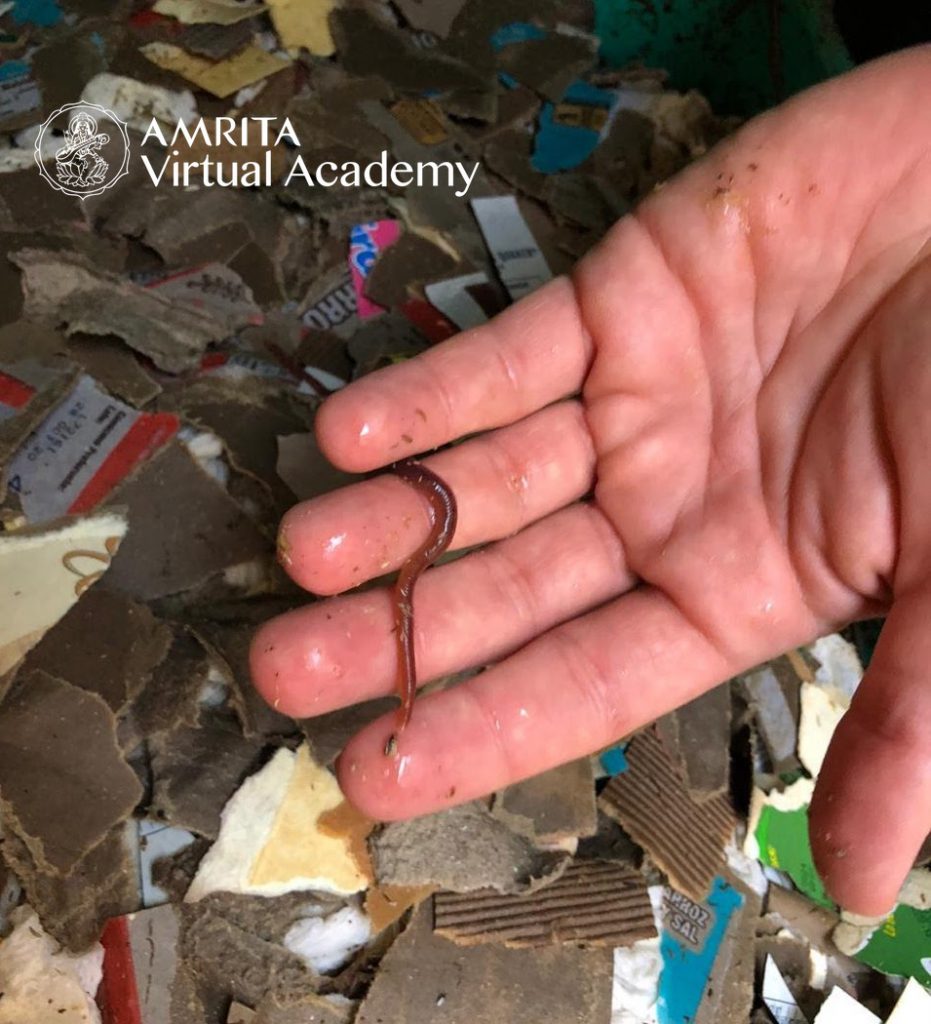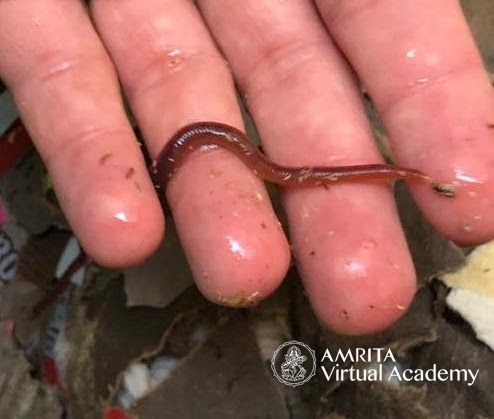Hello everyone and welcome.
I will be offering a series of urban gardening articles for the Amrita Virtual Academy blog. In this first edition on Urban Gardening & Composting, I offer to you one of several effective ways of composting when you live in an urban environment.
This post is the first of a two-part compilation on composting with red wriggler worms.
I live in the middle of the capital of Estado de Mexico, called Toluca. It is a bustling and vibrant city right outside of Mexico City.
Our local chapter, GreenFriends Mexico, focuses on urban gardening, urban composting, and the vital need for Source Reduction. (Source Reduction means to consciously reduce the output of waste we create. Even recyclable materials need to be reduced – or re-used – if possible.)

What is an urban environment? How do we define such a thing?
Literally, it is living in the city in a home or possibly an apartment. There may be a little patch of grass outside, a small yard, a mini-balcony, or a small patio. These are great environments to start a nice Red Wriggler Worm Compost Bin!
Why Red Wriggler Worm Composting?
One question that comes up about vermiculture (worm composting) is: “Can this be done in the city?” The answer is yes! In some urban homes it is easier than others. However, we can get creative in homes that have less or no green space.
Even in more rural areas – such as newer modern housing complexes or gated communities – they have small porches and little or no green space or yards. This is a common trend in many areas.
In our modern “cement jungles,” it is especially fun for children and “kids at heart” to play with these amazing little worm souls! Kids love to participate, learn, and play with the worms!
It helps both children and adults that live in cities and other urban areas to connect with Mother Nature, understanding composting (and how long it takes for even food waste to “go away”), and to experience the wonders of Life right at home in the palms of your hands!
There are three initial questions you will want to answer before starting a worm compost bin:
Where will my worm compost bin be placed?
How large of a worm bin is manageable in the space I have?
If I live in a cold climate, do I have a place to bring the worms inside, so they do not freeze to death?

Q1: Where will my worm compost bin be placed?
A: In an urban environment, there are many places you can explore placing a worm bin. In a garage, on a balcony, porch, patio, or if you are lucky enough to have a private green space that would be great.
Q2: How large of a worm bin is manageable in the space I have?
A: Urban homes come in many different shapes and sizes depending on which city and part of a city you live in. If you have more space like a garage, patio, balcony, or strip of green land outside, a worm composting bin is perfect in these spots.
I have two bins in my tiny garden outside!
I have used medium sized to large plastic storage bins to house my red wriggler worms.
The bin cannot be too small! They need space to play, live, move, and eat. If the bin is too small or uncomfortable, they may seek new living arrangements soon!
For small apartments and homes with limited space, the worm bin may not be the best option. We will share more blogs on urban composting to come in future months, too!
Q2: If I live in a cold climate, do I have a place to bring the worms inside, so they do not freeze to death?
A: This is probably the largest consideration for using worm bins in an urban area. What are your autumns and winters like? During cold seasons, the worm bins must be brought indoors – in a garage for example. If you are shivering outside, it is too cold for your worms, too! In temperate and warmer climates (like mine), the bin can stay out year-round.
Click here to view all our Gardening courses.
Red Wriggler Worm Fun Facts
You can only use red wriggler worms in the compost bins for your vermiculture experiment. Other species like the common earth worm will die in the compost bins because they do not like enclosure like the red wrigglers do.
Red wriggler worms are hermaphroditic! Expect babies over time! The red wrigglers tend to gather in clusters in the bin to eat and hang out. When their bodies rub together, larvae are produced which look like little brown or whitish-brown beads. You will definitely notice the babies as they are tiny, and the adult worms are long, plump, and large!
Red wriggler worms eat their body weight worth of food a day!
If ever you want the worms to descend deeper in the bin, shine a flashlight on them or talk loudly. They do not prefer the sunlight or loud voices to interrupt their seva (selfless service) or eating meditations!
You can buy your red wriggler worms online with a simple Google Search.
This makes a superb natural organic fertilizer for indoors and outdoor plants and vegetables – it is full of nitrogen and phosphorus and life!
Thanks for visiting us & reading. Come back soon!
